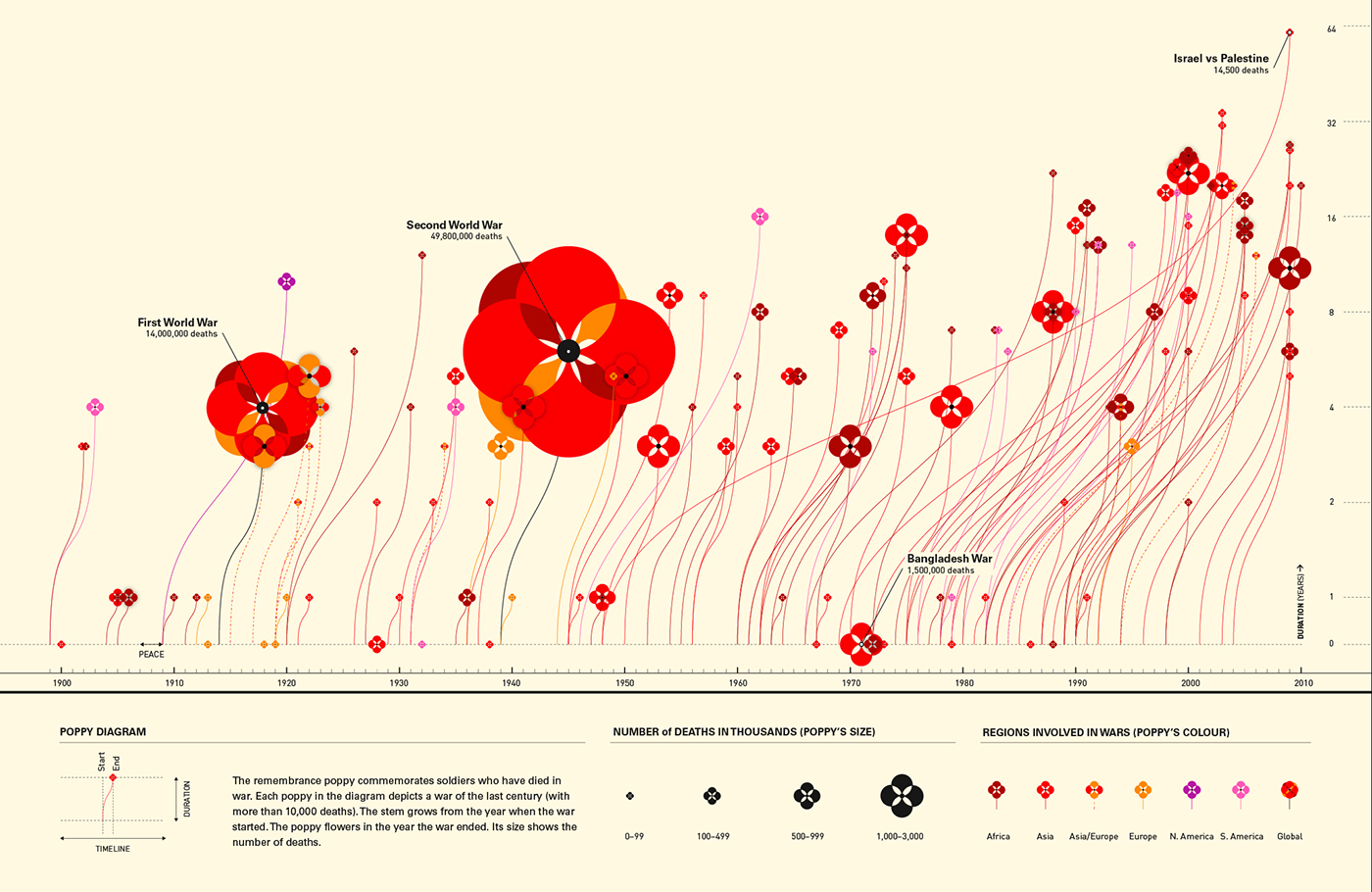
The “Poppy fields” piece is one of my favourite data visualisations: simple, beautiful and insightful.
This week’s Interdisciplinary Futures lecture made me think a lot about the practice of interdisciplinarity and how it has the inherent potential to reach new, unexplored terrain.
In interdisciplinarity, doubt feeds the praxis (e.g. in the way that Jane Alexander made her leading character coin the same doubts she herself had) and enriches the work of the two (or more) disciplines.
This, in addition to making my own intellectual autobiography, made me reflect on my ambition to work in an interdisciplinary context.
From what I’ve seen, inspired by the work on data visualisations from information designers like Giorgia Lupi, Valentina D’Efilippo or Federica Fragapane, I believe that the best ‘data visualisers’ (if that expression can be coined) are not the best designers, but precisely the people who understand the data and know how to best communicate it. I have seen some beautiful and aesthetic data visualisations in the past, but they weren’t so easy to understand. In this sense (and in many others in life), I believe less is more.
Inspired by this reflection, I came up with a diagram that shows what, to me, a good data visualisation should be and how it is inherently embedded in interdisciplinarity.

In this, my ambition for my Futures Project is to successfully develop a data visualisation that can lay in balance in the overlap of these three disciplines.
More ambitiously, I would like this data visualisation piece or series to challenge the reader/viewer to take some action. However, this part of the communication process would be harder to control from the author’s perspective (as seen in Graham Mort’s “Finding Form in Short Fiction” in The World of Story course). Still, as the author, I will do my best to achieve my desired outcome.
Websites of practitioners mentioned:
Valentina D’Efilippo: https://bento.me/defilippovale
Federica Fragapane: https://www.behance.net/FedericaFragapane
Giorgia Lupi: https://giorgialupi.com/
Bibliography:
Mort, Graham. “Finding Form in Short Fiction”. Short Circuit: a Guide to the Art of the Short Story / Edited by Vanessa Gebbie, Second edition. Salt, 2013, pp. 4-16
(Credit: Valentina D’Efilippo and Nicolas Piagelet.)
(Paula Lago)



Leave a Reply